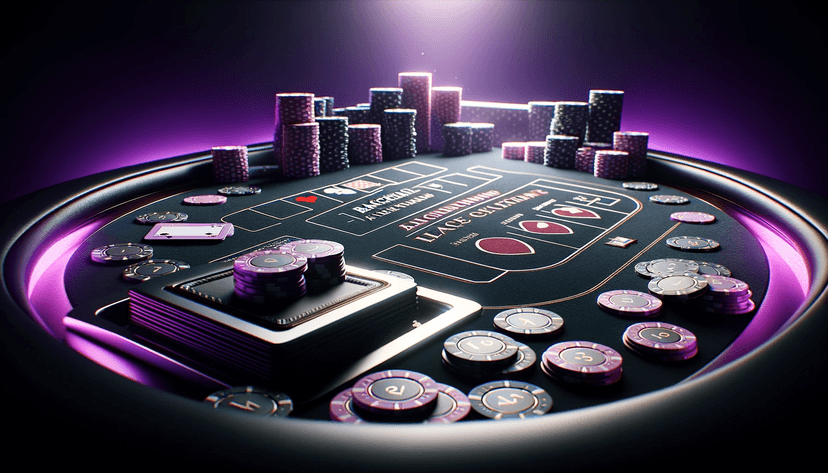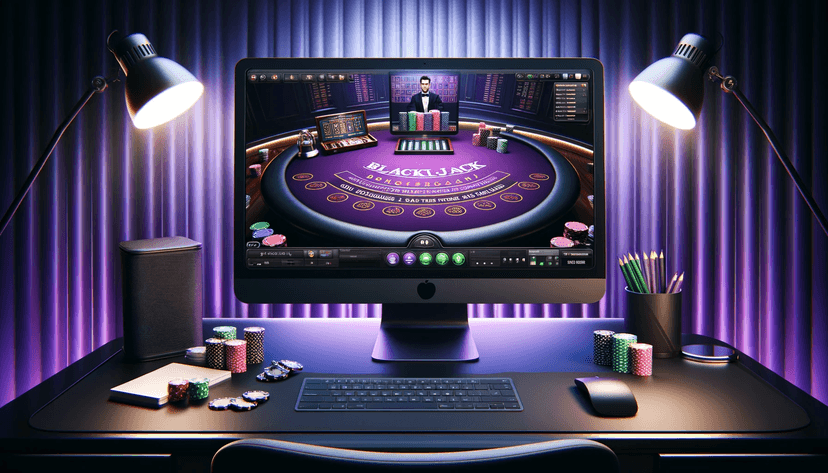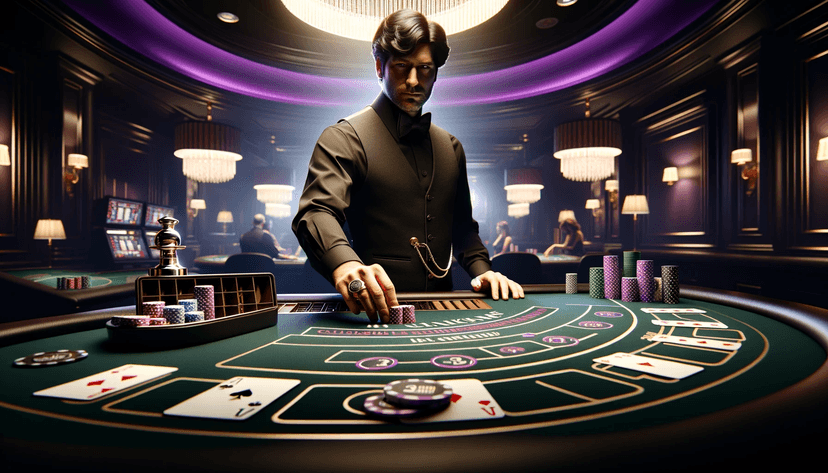Card Counting in Online Live Blackjack

Blackjack has always been and will remain one of the hottest card games played in both online casinos and physical ones. When you're playing blackjack, you need a bit of luck to get the best cards and win big. But, you can definitely boost your winning chances by having a solid strategy.
There are loads of strategies you can use when playing card games online, and one of the most popular has to be card counting.
Now, card counting is a bit trickier to pull off in online blackjack compared to physical casinos. However, it's still very possible and can give you that slight edge over the house.
How Does Card Counting Actually Work?
Whether you're into casual spins or serious strategy, blackjack or poker, card counting can be a game-changer.
This strategy means you have to actively keep track of the cards that have already been dealt and try to remember them. After playing for a bit and getting the hang of counting, you'll be able to tell if the next hand is likely to be in your favour.
Step 1: Assign Values to Dealt Cards
First off, you need to watch the cards and assign these values to each:
- Low cards (2s through to 6s) = +1
- Neutral cards (7s through to 9s) = 0
- High cards (Aces through to 10s) = -1. This tallying of cards is also known as the 'running count'.
Step 2: Calculate the True Count
Next, you need to figure out the 'true count' to keep tabs on the multiple decks used in most real-money blackjack games. To do this, simply take your running count and divide it by the estimated number of remaining decks. You can usually guess the remaining decks by looking at the shoe, for example, if you have a running count of +9 and estimate 3 decks left, your true count is +3.
Step 3: Know Your Advantage
Next, apply the “true count” to determine if you hold an edge over the house. Here is how true count determines the advantage or disadvantage: -3 = 2.05% house edge -2 = 1.53% house edge -1 = 0.80% house edge 0 = 0.42% house edge +3 = 1.77% player’s advantage +2 = 1.17% player’s advantage +1 = 0.58% player’s advantage Remember that a higher true count lets you risk more with high confidence.
The Possibility of Online Live Blackjack Card Counting
While online live blackjack uses real decks of cards, they are shuffled more frequently than in a traditional casino. This makes it harder for players to count cards effectively. Additionally, many live online casinos employ software to detect card counters and prevent them from playing. However, it is still possible to use card counting strategies in online live blackjack if you are disciplined and adapt your strategies to the online format.
Strategies for Card Counting in Online Live Blackjack
Here are some tips to help you implement card-counting strategies in online live blackjack:
Keep it simple
Stick to a basic card counting system like the Hi-Lo count. This system is easy to learn and implement and will give you a good idea of when the deck is in your favor.
Practice
Practice counting cards at home before playing online live blackjack. There are many online simulators available that can help you improve your skills.
Adjust your betting
When the deck is in your favor, increase your bet. When the deck is against you, decrease your bet. This will help you maximize your winnings and minimize your losses.
Pay attention to the game
Stay focused on the game and avoid distractions. Watch for changes in the dealer's behavior and patterns in the cards dealt with.
Risks and Rewards of Card Counting in Online Live Blackjack
Card counting can give players an edge over the house, but it also carries risks. Here are some potential risks and rewards to consider:
Rewards
- Increased chances of winning
- More accurate betting decisions
- Ability to take advantage of favorable situations
Risks
- Detection by live online casinos and possible ban
- Legal consequences in some jurisdictions
- Requires a significant amount of time and effort to master
Conclusion
Overall, card counting will always be easier to implement if you are playing in a land-based casino. Nevertheless, this strategy will work well even online if you practice it enough and find a good casino to do it.
We recommend you start on blackjack tables with fewer decks in play, which will make your job simple.
FAQ
What exactly is card counting in Blackjack?
Card counting is a strategic technique used by players in card games, particularly Blackjack, to keep track of the cards that have been dealt. It involves assigning a numerical value to each card dealt, allowing players to estimate whether the remaining cards are more favorable to them or the dealer. This helps in making informed decisions about betting and playing strategies.
Is card counting possible in live dealer blackjack games?
Yes, it is theoretically possible to count cards in live dealer blackjack. However, online casinos often employ sophisticated software and monitoring techniques to detect card counters. If a player is suspected of using this strategy, the casino may take action, such as limiting their betting amounts or even banning them from the platform. Always gamble responsibly.
Can card counting really improve my chances in live blackjack?
Card counting can potentially give players a slight advantage over the casino in live blackjack. However, it's crucial to understand that it's not a guaranteed winning strategy. Effective card counting requires extensive practice, excellent memory skills, and the ability to remain discreet. Furthermore, casinos often take measures to counteract card counting, such as using multiple decks or shuffling more frequently.
How difficult is it to count cards in online live blackjack games in Kenya?
Card counting in online live casinos can be more challenging than in physical casinos due to factors like frequent shuffling and the use of continuous shuffling machines. However, with dedicated practice and a solid understanding of card counting techniques, it is still possible to gain an edge. Remember to always play responsibly and be aware of the casino's terms and conditions regarding card counting.










